Basic Information
Observation Details
Observation Date:
January 30, 2025 - January 30, 2025Submitted:
January 31, 2025Observer:
TAC - Charlie HarrisonZone or Region:
Taos AreaLocation:
Storm Slabs Driving Dangerous Conditions TodaySigns of Unstable Snow
Recent Avalanches?
YesCracking?
WidespreadCollapsing?
WidespreadSnow Stability
Stability Rating:
PoorConfidence in Rating:
HighStability Trend:
Bottom Line
Last night's heavy snowfall (10 or more inches in most places) has led to a widespread storm slab problem on all aspects and elevations. The storm built soft slabs on top of a weak old snow interface - near surface facets in many places - and the resulting soft slabs are proving to be very reactive, even though they formed without very much wind at play. The current sensitivity of these slabs means there is also a heightened possibility of triggering a persistent slab avalanche that could break wider and deeper within the snowpack on depth hoar or faceted crusts below the old snow interface.
Media
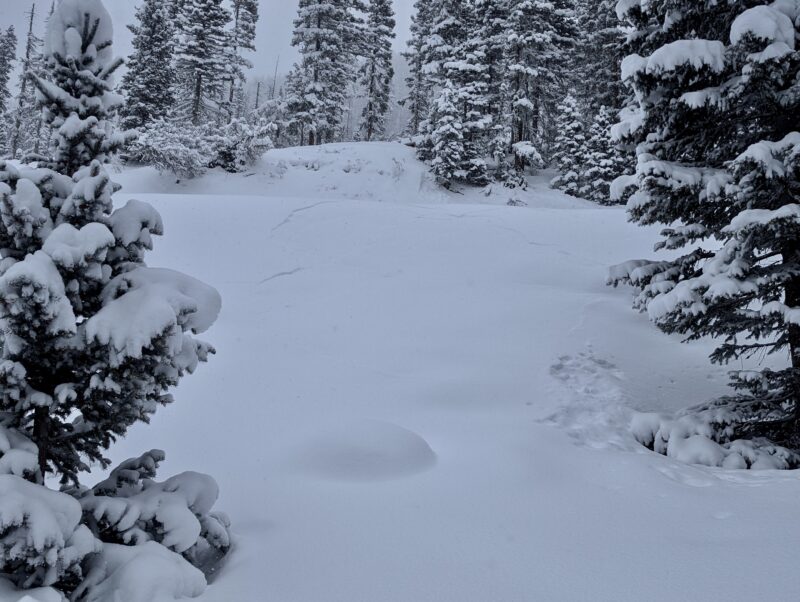
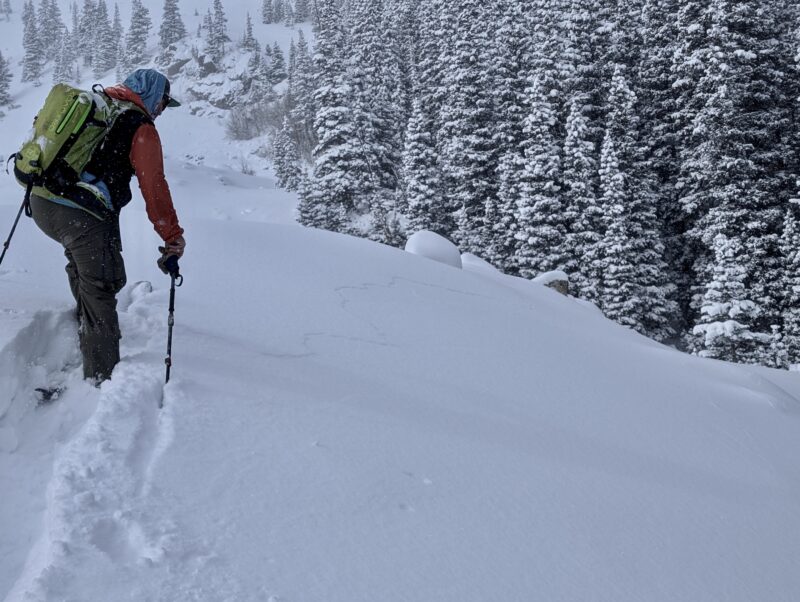
Advanced Information
Weather Summary
Cloud Cover:
ObscuredTemperature:
15-20Wind:
Light , SWToday was the first pow day in a long time. We observed an average of 10-14 inches of new snow on the ground throughout our tour, and it was actively snowing throughout our time in the field (variable with an average of rate of S1 or less). We had a few brief moments of clearing, but not enough to see much detail at a distance. Winds were light throughout the morning and started to pick up a little bit after noon.
Avalanche Observations
| # | Date | Location | Size | Type | Bed Sfc | Depth | Trigger | Comments | Photo |
|---|---|---|---|---|---|---|---|---|---|
| 1 | Today |
Steep, Rocky Chute NE 11,400 |
D1 | SS | I-New/Old Interface | 25cm | N-Natural | This avalanche released on the new snow/old snow interface. The crown was over a foot deep in spots and about 50 ft wide. |
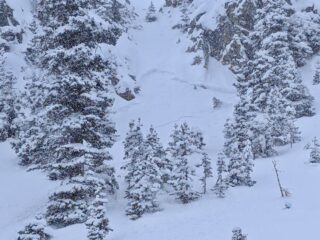
|
| 1 | Today |
Open, Mid-Path Rollover NE 11,300 |
D1.5 | SS | I-New/Old Interface | 30cm | N-Natural | It was hard to tell the exact extent of this avalanche but it clearly broke wider than anything else we witnessed today (100 ft or more). |
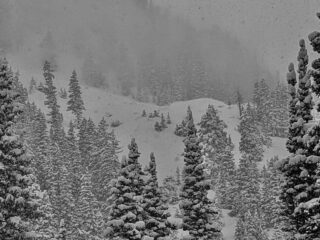
|
Snowpack Observations
Today we dug a pit on an NNE aspect near treeline and conducted several ECTs to see what kind of results we'd get in the context of all the cracking and collapsing from skinning around. Sure enough, we achieved easy propagation in our tests - between ECTP2 and ECTP9 for this spot. Each time, the slab failed and propagated on near surface facets that formed during last week's dry and cold weather.

Avalanche Problems
| Problem | Location | Distribution | Sensitivity | Size | Comments |
|---|---|---|---|---|---|
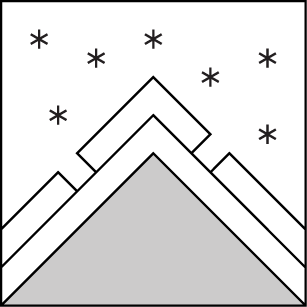 Storm Slab
Storm Slab
|
|
The storm slabs stole our attention today by showing telltale signs of being highly reactive, which was a bit surprising given the lack of wind throughout this heavy storm. Not only did we get widespread cracking and collapsing and spot natural avalanches that failed at the new/old snow interface, but we also achieved easy propagation in successive long-column ECTs. We traveled mostly in areas below treeline and skimmed some near-treeline terrain, but it's clear to me that this problem is all over the compass at the moment. | |||
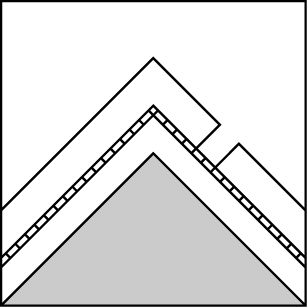 Persistent Slab
Persistent Slab
|
|
We didn't see any obvious persistent slab avalanches today, but we didn't touch any avalanche paths or terrain above treeline. Given what we know about the snowpack prior to this storm, it's clear that persistent slab avalanches are possible right now. It would probably take collapsing a weak layer beneath the old snow interface (depth hoar or faceted crusts) or triggering a storm slab in larger terrain that then steps down, but I have no doubt that this is a concern in the higher alpine today. |
Despite the obvious sensitivities that we witnessed today, I'd like to point out that it would be nearly impossible to trigger an avalanche larger than a D2 in our snowpack right now, given how shallow the snowpack has been over the last two and half months since our last significant snowfall.
Terrain Use
We completely avoided avalanche terrain today in acknowledgement of the hazards.
Close